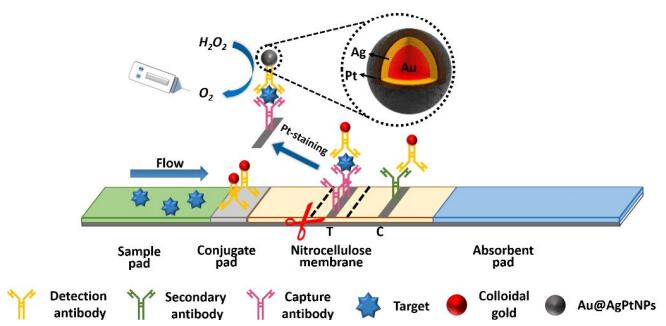Department of Chemical Biology
Yang's Lab,Department of Chemical Biology, Xiamen University
Professor Yang
 Know more>>
Professor
Department of Chemical Biology, Xiamen University
Know more>>
Professor
Department of Chemical Biology, Xiamen University
Contact Information
Yang's LaboratoryRoom 532, Lujiaxi Building, College of Chemistry and Chemical Engineering, Xiamen University, Xiamen 361005, China
Ph: +86 (0) 592-218 7601cyyang@xmu.edu.cn
Di Huang's work has been accepted by Appl. Mater. Interfaces
2018-12-29 02:02:00

Traditional immunochromatographic test strips based on colloidal gold are effective devices for portable and low-cost point-of-care (POC) testing. Nevertheless, they still suffer from the limitation of qualitative or semiquantitative tests via naked-eye detection. Replacement of gold with other signal entities, such as magnetic particles or fluorescent particles, requires professional instrumentation to obtain quantitative results. A pressure-based assay with platinum nanoparticles (PtNPs) can provide quantitative results using a portable pressure meter but is also hampered by the long-term instability of PtNPs. Consequently, we developed a Pt-staining method based on test strips to create platinum nanoshells on the surface of colloidal gold. This method not only preserves the original advantages of colloidal gold with easy synthesis and decoration but also introduces PtNPs with excellent catalytic activity as signal labels to achieve sensitive quantitative detection. Myoglobin was tested as a model target, and the limit of detection was 5.47 ng/mL in 20% diluted serum samples, which satisfies the requirements for clinical monitoring of acute myocardial infarction. In addition, the two most common colloidal gold strips available in the marketplace were applied to demonstrate the compatibility of Pt-staining. Taking advantage of low cost, user-friendliness, compatibility, simplicity, and stability, colloidal gold test strips with Pt-staining are expected to satisfy the need for quantitative POC testing of biomarkers, especially in resource-limited regions.
